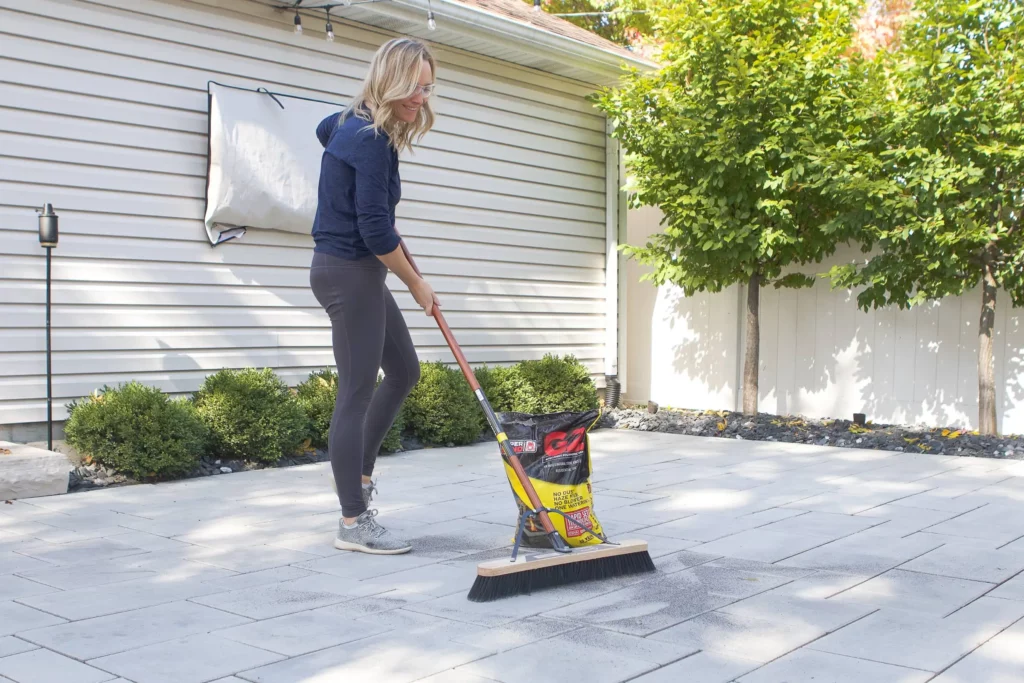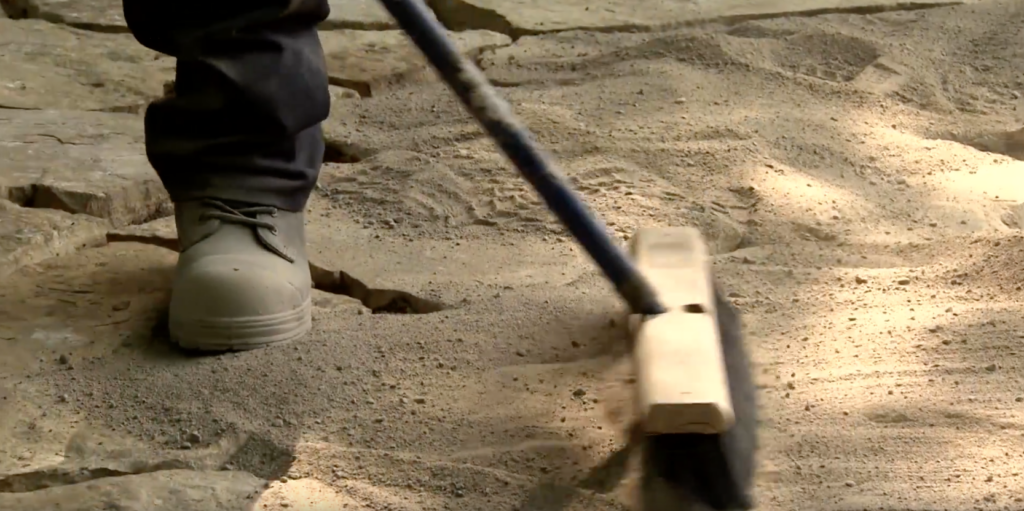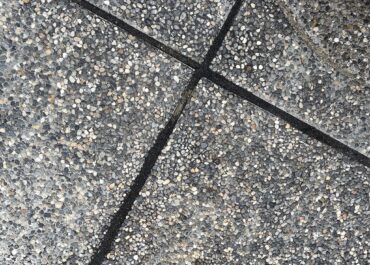
When it comes to paver installations, polymeric sand has emerged as a pivotal element, revolutionizing the way we stabilize and interlock paving stones. This advanced sand is designed to fill the gaps between pavers and create a durable, weed-resistant, and weather-resistant surface for years to come. Its unique properties make it an excellent choice for various hardscaping projects, including patios, walkways, driveways, and pool decks – but how to use polymeric sand the right way?
In today’s article, we will explore how to use it effectively, its primary applications, reasons for choosing it over other sand bases, and the common mistakes to avoid during its application.
Read as well: How to Seal Pavers Joints – All You Need to Know
How to use polymeric sand
This special sand is a blend of fine sand particles and a unique polymer that activates when exposed to water. The activation forms a binding agent that solidifies the sand, providing an outstanding solid base for your pavers. That said, we’ve listed below the main two methods of applying polymeric sand: as a paver base, and as jointing material.
As a paver base
You may begin by excavating the area to the required depth and ensuring proper compaction of the soil. Install a sturdy edge restraint to prevent the pavers from shifting over time. Next, add a layer of compacted gravel or stone dust, commonly known as the paver base. After that, you can dump polymeric sand right above it to even the floor – ensure it is level and firm, as this will provide a stable foundation for your pavers.
Click here to read all about paver installation.
As jointing material

As you may know, polymeric sand is primarily used to fill the joints between interlocking pavers. Once your pavers are laid in place, you must sweep it over the designated surface, making sure it reaches the gaps between each stone. Also, use a broom or a rubber mallet to gently tap the pavers, allowing the sand to settle further into the joints.
Check out the tutorial below for a more detailed explanation:
- Place the pavers on the compacted base in the desired pattern. Leave a small gap (typically 1/8 to 1/4 inch or 3 to 6 mm) between each paving stone. These gaps will be filled with polymeric sand;
- Ensure that the surface is clean and free of any debris or dust before applying the polymeric sand;
- Pour the polymeric sand onto the paver surface. Use a broom or a brush to sweep the sand into the gaps, making sure the sand is evenly distributed;
- After the sand is spread, use a plate compactor to gently compact the pavers. This helps the sand settle into the gaps and ensures a better bond;
- Once the pavers are compacted, lightly mist the polymeric sand with water. Be careful not to overwater, as excessive water can wash away the sand;
- Allow the polymeric sand to dry and cure according to the manufacturer’s instructions. This usually takes a few hours to a day, depending on the product and weather conditions;
- After the sand has fully cured, sweep the paver surface to remove any excess sand that may be sitting on the surface.
Why choose polymeric sand over other types
There are two other main types of sand used for hardscape projects: masonry sand and regular paver joint sand, which are both great and durable investments if handled properly. Still, learning how to use polymeric sand is the go-to option in most cases – and the thing that experts, ourselves included, recommend homeowners to do.
There are a few reasons for that, such as:
- Enhanced stability: Polymeric sand solidifies when exposed to moisture, creating a flexible yet robust bond between the pavers. This ensures that the jointing material remains in place, reducing the risk of paver movement and displacement.
- Weed and insect resistance: Unlike traditional sand or gravel, polymeric sand forms a weed-resistant barrier, preventing unwanted plants and insects from taking root between the pavers.
- Improved durability: Once activated, polymeric sand becomes water-resistant, protecting your pavers from water erosion and enhancing their longevity.
- Aesthetically pleasing: The color options available in polymeric sand allow you to choose a shade that complements your pavers, enhancing the overall visual appeal of your hardscaping project.
How NOT to use polymeric sand

It is a wonderful product, no doubt about it – but the right handwork is everything. Any miscalculation can seriously compromise the lifespan of a paver surface, so it’s important to follow straight guidelines and professional techniques. Some problems that may arise include:
- Watering: Avoid wetting the sand prematurely, as this can activate the binding agents too early, leading to an uneven and weak jointing results.
- Poor drainage: Insufficient drainage beneath the pavers can cause water to pool, potentially dislodging the sand and destabilizing the installation.
- Overfilling: Do not overfill the joints with polymeric sand, as excessive material can spill onto the surface and harden, leaving unsightly stains on the pavers.
- Narrow or wide joints: Using polymeric sand in joints that are too narrow or too wide can affect its effectiveness. Always follow the manufacturer’s guidelines regarding the recommended joint width for your specific project.
Eagle Pavers can give you a hand!
As a branch of Eagle Stones, our team specializes in paver supply and installation around the county of Sarasota and Manatee, Florida. In case you’re near us, don’t hesitate to give us a call so we can get started on your paver project with a free estimate!
Click here to view the full online catalog – we’ll be waiting for you to reach out.




